Homestyle Portuguese food for the winter
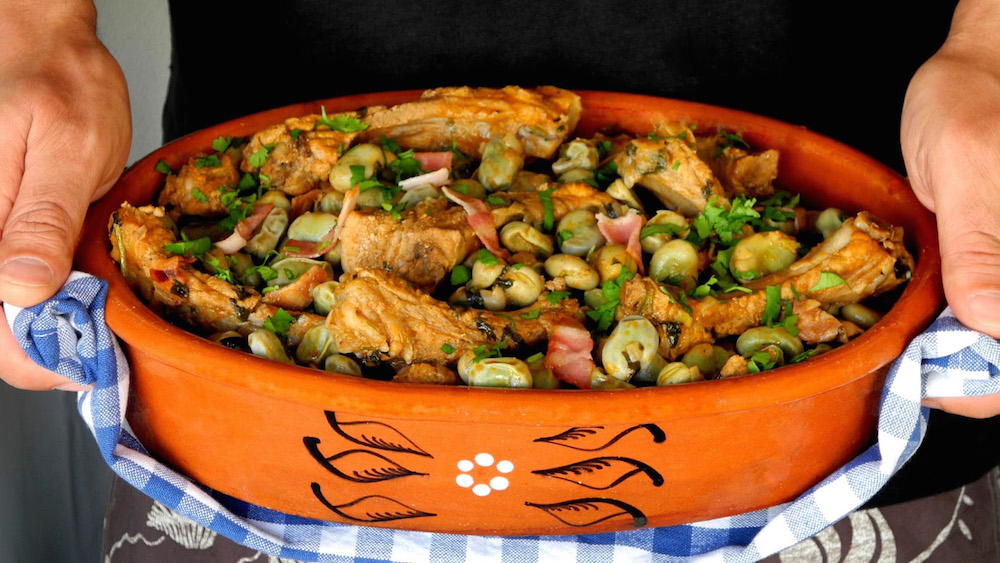
During the colder months, we crave foods that are nourishing, warming and that evoque a certain sense of nostalgia. If there is a time of the year when comfort food can be the most rewarding, winter is probably it!
Even though eating out, take-away and home deliveries are increasingly popular in Portuguese cities, the truth is that home cooking still runs deep in our culture. Most folks know how to fend for themselves in the kitchen and, while the repertoire of dishes can include international influences, Portuguese recipes are the ones still closer to our hearts.
During winter, Portuguese people love cooking one-pot meals and cosy preparations that are caloric enough to help you power through the day, while keeping you warm. At home, it’s common to cook some recipes that you’d hardly ever find in restaurants. So, if you’re lucky to make Portuguese friends and get invited to eat in, you may have the chance to try Portuguese foods that you may not see mentioned in your typical restaurant menu.
Are you curious about what the Portuguese eat at home during winter? These are some of our favorite Portuguese dishes during the colder months, including a bonus recipe at the bottom, so that you can taste a little bit of Portugal no matter where in the world you are!
Sopa: soups
We enjoy soups all year long, but it is during the winter that a nice bowl of soup is even more appreciated. A good portion of the average vegetable intake in the typical Portuguese diet is done in the form of soup. Vegetable soups are generally eaten as an appetizer before your main meal. But there are certain heavier soups, defying the distinction between soup and stew, that pack more filling ingredients like beans and chunks of meat or fish, and that could easily make a meal on their own. Having a good serving of soup, along with bread and perhaps some butter or cheese is a customary go-to dinner for many Portuguese, especially for older people who may not feel like eating a full cooked meal in the evening. Traditionally, Portuguese households will often have a tupperware full of home-made soup in the fridge. The average Portuguese kid grows up eating soup, and while we sometimes hate it while young, the truth is that most of us do end up developing an affectionate relationship with this simple but comforting warm meal.
The most beloved Portuguese soups consist of a base of pureed vegetables such as potatoes, carrots, squash and onions, with add-ons like leek, green beans, spinach, chard or other leafy greens. Non-vegetarian soups also include the popular caldo verde, shredded collard greens over cream of potato soup, served with a slice of chorizo; sopa da pedra, a heavy concoction with vegetables, kidney beans and cured meats; or sopa de peixe, that is a tomatoey broth with chunks of fish.
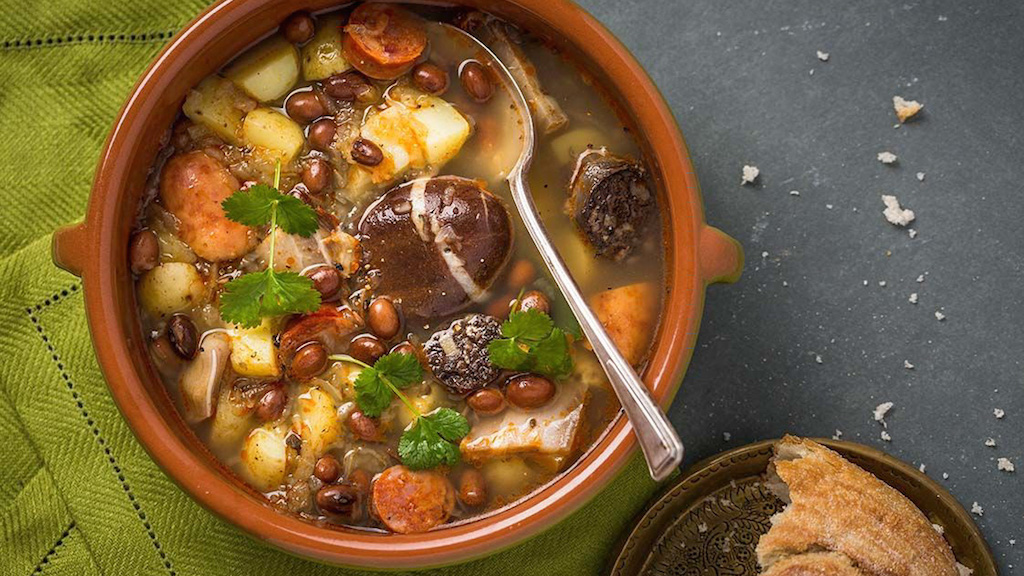
Bacalhau recipes
You may be thinking that the Portuguese are obsessed with salted cod, locally known as bacalhau, all year long. So what makes this a winter food? Well, if it’s true that we enjoy eating this cured fish any time, it’s also true that there are recipes for it more appropriate for summer months, and others that are particularly pleasant to cook at home during winter.
Winter is a great time to indulge in heavier bacalhau recipes, such as bacalhau com todos, bacalhau à Gomes de Sá, or bacalhau com broa.
Bacalhau com todos is Portugal’s typical Christmas dinner and something we eat many other days of the year as well. It’s a simple dish of boiled fish with steamed veggies such as potatoes, carrots and green beans. Adding a boiled egg per serving is also part of the deal and, sometimes, boiled chickpeas are also included. No matter what vegetables keep the fish company, drenching everything in a generous amount of extra virgin olive oil seems to be the rule of thumb.
Bacalhau à Gomes de Sá, originally from the north of Portugal, is as festive as bacalhau com broa. Both these dishes are a little more elaborate than bacalhau com todos, and are often featured on the Sunday lunch table for the extended family. Gomes de Sá style cod consists of a casserole of deboned shredded cod, potatoes and onions served with black olives as garnish, while bacalhau com broa presents the fish fillets with a crust of cornmeal crumbs on a bed of leafy greens, flavored with garlic olive oil – see our recipe for it here!
Our collection of codfish winter dishes wouldn’t be complete without oven dishes such as bacalhau com natas and bacalhau espiritual. These one tray wonders are baked in the oven and great to feed a large group of friends. You can also make a big batch, as these are recipes that reheat very well! Bacalhau com natas, as its name in Portuguese states, consists of cod with cream. The fish is deboned and turned into flakes, which are mixed with potatoes and onions and drenched heavily with cream before being cooked au gratin in the oven. In some homes the dish is finished with a top layer of cheese, like a lasagna, which is bound to make you feel like snuggling even more after your meal. Bacalhau espiritual sounds rather mystic, but actually consists of a very down-to-earth mix of shredded cod, old bread soaked with milk, beaten eggs and grated carrots, also browned in the oven for a rewarding dish often served with a simple side salad.
Winter is also a perfect time for cod fritters such as pastéis de bacalhau, made with a potato batter, or pataniscas, a flatter cousin of pastéis made with a flour and eggs based batter instead. These fritters go beautifully with saucy preparations of rice, such as known in Portugal as arroz malandrinho.
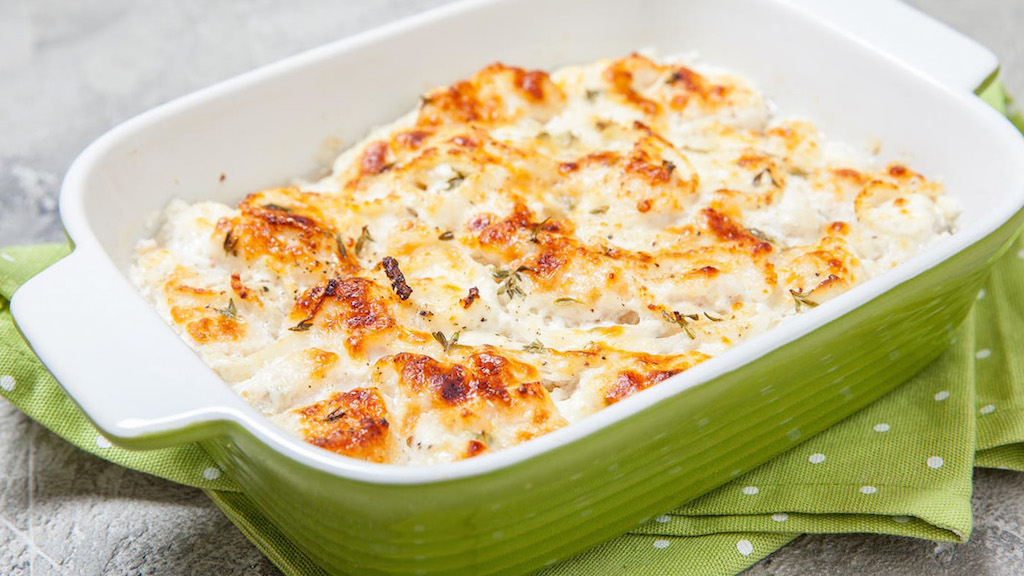
Portuguese rice dishes
Italy has risotto, and Portugal has the so-called “naughty rices”, that is, loose saucy rice dishes most commonly prepared with a locally grown type of grain called carolino. The repertoire of Portuguese rice recipes is very vast, but there are some dishes which we commonly treat ourselves to when eating out, like seafood rice, and others which are much more likely to be prepared at home.
In Portugal, rice recipes can be served as a side dish or as a main. As a complement to the main protein on the plate, everyday saucy rice recipes include arroz de tomate, with tomatoes, arroz de feijão, with red kidney beans, and arroz de grelos, with turnip greens. These rice dishes are most often served with fried fish, either in the shape of cakes like those with cod, or fish fillets, like battered and deep fried hake.
Rice dishes as a main dish usually involve animal protein. They are either cooked on the stove top, like arroz de polvo, with octopus, or arroz de peixe, with pieces of fish. Or could also be finished in the oven for a golden layer, like in the case of arroz de pato, rice cooked with pulled duck in its own broth, layers with fatty chorizo slices, baked until crusty perfection.

Portuguese winter stews
What would winter be without a nice homely stew? Thankfully for us here in Portugal, or anyone visiting our country, Portuguese food is rooted in peasant cuisine and that immediately translates into stews being a highlight.
Stews are a way of stretching ingredients, while infusing depth of flavor into foods that may not be considered that stellar all by themselves. It’s about bringing together what’s available, seasoning fearlessly and adding a pinch of the secret ingredient (love, of course!) to end up with home-cooked food at its best!
Families have their own recipes for stews featuring vegetables and meats but, countrywide, the most beloved Portuguese stews include feijoada, dobrada, carne de porco à alentejana, rojões, caldeirada and what we consider to be the national dish of portugal, cozido à portuguesa.
If you are into stews with legumes as the main focal point of the dish, you will enjoy feijoada, kidney bean stew with meats, or dobrada, the typical dish from the region of Porto, featuring white beans with beef intestine cooked in a tomato rich broth until tender.
Meat lovers will get their kicks with braised pork chunks. If you get invited into a southern Portuguese family home, you will likely get to enjoy carne de porco à alentejana, which involves paprika marinated pork cubes served with clams and thick homestyle fried potatoes. Up north, you are much more likely to be served carne de porco à portuguesa or rojões, which are similar recipes that forgo the clams and instead may include pickled vegetables or roasted chestnuts.
Because the Portuguese don’t live on meat alone, even though the winter does ask for heavier foods, caldeirada is a fish stew that makes very good use of whatever fish you may have. Traditionally a dish by and for fishermen, caldeirada brings together in one pan bits and pieces of fish, potatoes and vegetables, seasoned right for good flavor and a cosy aftertaste.
If there is one dish which we believe everyone should try when traveling in Portugal, and even more so during the winter, that is cozido à Portuguesa. Instead of explaining what cozido involves, we could almost tell you what it does not include, as this is such a rich preparation with a large variety of meats, carbohydrates, vegetables and even legumes. Cozido à Portuguesa is best enjoyed on a cold day, for lunch, allowing for plenty of time to digest it throughout the rest of the day. Bonus tip: naps after eating cozido à Portuguesa are great and, why not, a local experience you can indulge in while in Portugal!

Other homestyle Portuguese dishes
The list of Portuguese recipes we often make at home during winter is virtually never ending, and it will vary depending on the region of the country and even each family. These are a few other traditional dishes to be expected during the cold season in Portugal:
Açorda: bread stew infused with garlic broth. This açorda is often served with boiled prawns and a raw egg yolk to be mixed with the bread mush right before eating, to be slightly cooked with the residual heat. Down in the region of the Alentejo, açorda stands for a more soupy preparation, in which the bread is not served in a porridge-like consistency, but it’s instead drenched with a coriander flavored broth, and topped with poached eggs or steamed cod. Try making açorda at home following our recipe!
Empadão: this is one dish you are very unlikely to try unless at home in a Portuguese household. Empadão (pictured above) could be Portugal’s answer to lasagna, featuring layers of mashed potatoes with braised meat. Empadão de arroz is even less common in restaurants, and it switches the potato mash for rice. This is legitimate Portuguese home style cooking!
Favas com entrecosto: a caressole of braised fava beans with pork short ribs cooked until very tender. Favas com chouriço is a variation of this dish substituting the ribs for chorizo, while favas à portuguesa can actually feature these and even more meats, including blood sausage known in Portuguese as morcela.
Rancho: a one pot dish that certainly is not lacking potential to satisfy even those with a big appetite! Rancho consists of a stew with chickpeas, potatoes, macaroni, cured sausages and plenty of cabbage. If rancho isn’t an edible synonym of winter, we don’t know what can be!
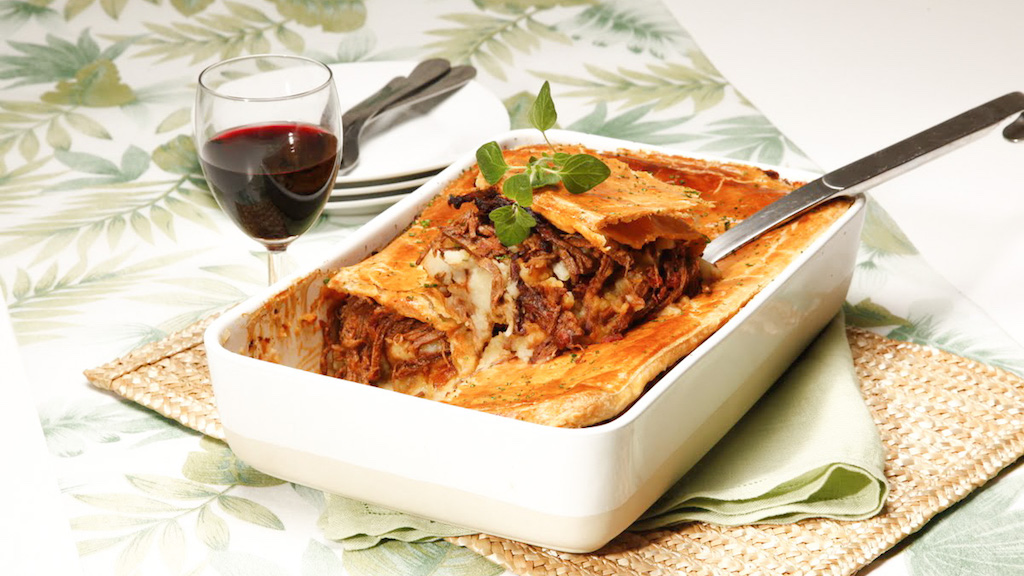
Ovos com ervilhas – recipe for Portuguese style green peas with poached eggs
We thought we’d share with you a quick and easy Portuguese recipe which you can make with ingredients that you can pretty much find anywhere in the world. This is our way to open your appetite for more mouthwatering Portuguese foods we hope to introduce to you here in Lisbon!
Portuguese style green peas with poached eggs are a testament to creativity, to how you can make a nourishing meal with only a handful of humble ingredients, and make it taste so appetizing. Admittedly the cured chorizo is to blame for the smoky flavors that go so incredibly well with the rich runny egg yolks, bound to make any winter day a little warmer.
To make ovos com ervilhas for 4 people, you will need:
- 500g green peas (you can use frozen ones)
- 4 eggs
- 100g tomato purée
- 100g Portuguese style chorizo, sliced
- 200ml water
- 50ml olive oil
- 1 onion
- 2 cloves of garlic
- 1 bay leaf
- Chopped cilantro to taste
- Salt & pepper to taste
Wear your imaginary Portuguese chef hat and start by braising the chopped onions, garlic and bay leaf in a hot pan with olive oil. When the onions become translucent, add in the chorizo and tomato purée.
When the chorizo starts releasing its paprika infused fat, it’s time to add in the green peas and cook for a couple of minutes, allowing for them to soak up the meaty flavors. Add in just enough water to cover the peas and bring everything to a boil on medium heat.
Once the mixture is boiling, season with salt and pepper and reduce the heat to medium-low. Cover the pot and allow it to cook for 20 minutes. You should check every 5 minutes to stir and make sure the food doesn’t stick, always putting the lid back on afterwards.
When the peas are cooked through, open up 4 little spaces and add in the eggs. At this point you can simply turn off the heat, cover the pot, and allow for the remaining heat to poach the eggs. But if you like your yolks very well done, you can still leave the heat on for one more minute. Otherwise, the residual heat will be enough.
Serve with chopped cilantro to taste on top, and don’t forget to make sure you have some bread nearby to dip in the egg yolks and to soak up the juices of this wonderfully satisfying stew!
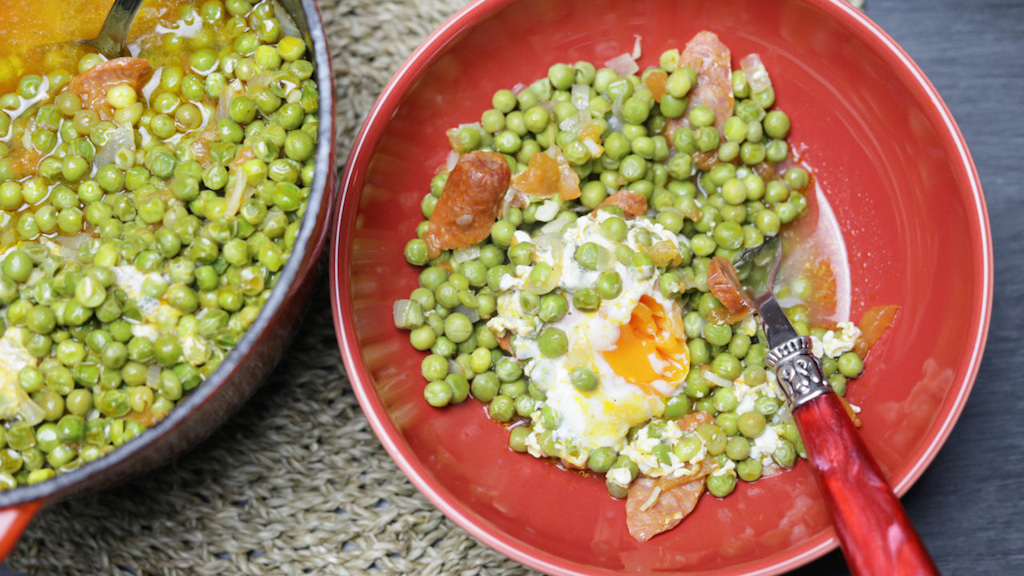
What dishes make you feel like staying in for a cosy winter meal Portuguese style? Let us know what tickles your fancy via Instagram and Facebook – Please tag us: @tasteoflisboa #tasteoflisboa
Feed your curiosity on Portuguese food culture:
Foods you didn’t know were Portuguese
Travel around Portugal in 18 foods (without leaving Lisbon)
What do the Portuguese eat for breakfast?
Real people, real food. Come with us to where the locals go.
Signup for our natively curated food & cultural experiences.
Follow us for more at Instagram, Twitter e Youtube
